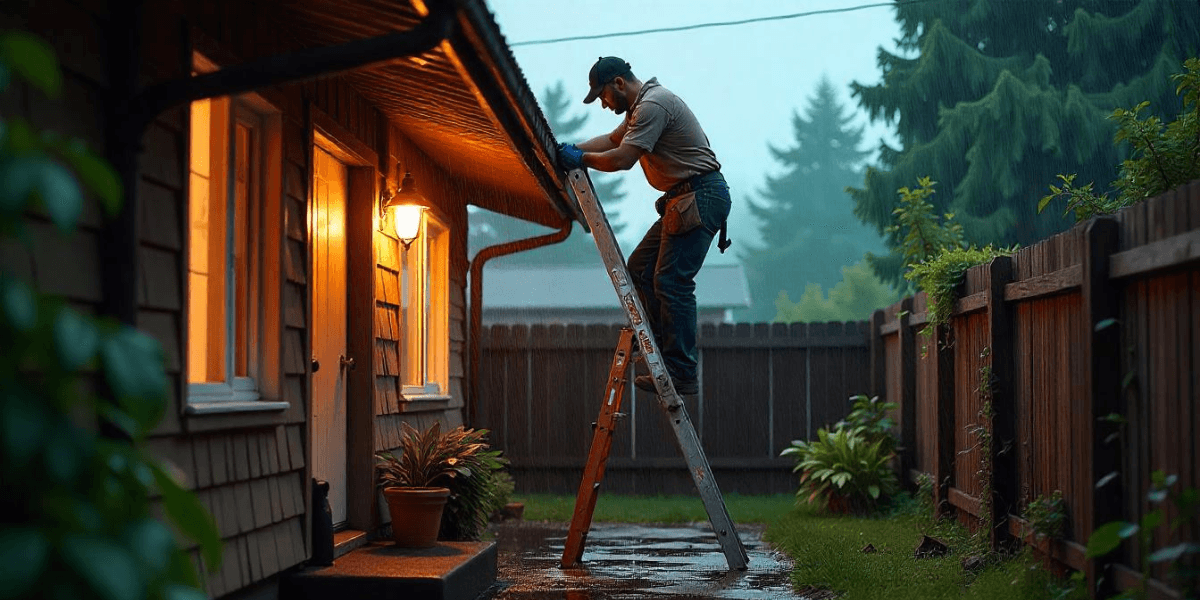Roof plumbing plays a role in managing the water flow from your roof and protecting your property from damage caused by leaks, overflowing, or improper drainage. Problems with roof plumbing are common and can lead to expensive repairs if left untreated. We have compiled this blog to discuss the most common all seasons roof plumbing problems, tips to detect them, and how plumbing can help you maintain your roof in peak condition.
Understanding Roof Plumbing
What is Roof Plumbing? Roof plumbing involves the installation, repair, and upkeep of systems designed to manage water flow on the roof, such as gutters, downpipes, and flashing. These systems are necessary to divert water away from the structure, prevent water damage, and maintain the roof’s integrity.
Complete roof plumbing means that rainwater flows safely away from your home, preventing leaks, dampness, and structural damage. Inadequate maintenance of roof plumbing systems can lead to significant issues down the line, including water damage, mould growth, and foundation problems.
Blocked Gutters And Downpipes
These systems are designed to channel water away from your home, but over time, they can accumulate leaves, twigs, dirt, and other debris, blocking the flow of water. This can lead to overflowing gutters, water pooling around your foundation, and increased pressure on your roof.
How To Detect Blocked Gutters
- Water pooling around your foundation
- Overflowing gutters during storms
- Visible debris or plants growing in gutters
Leaking Roof Tiles
Leaking roof tiles are another common issue that everyone faces, especially in areas with heavy rainfall. Over time, roof tiles can crack or become displaced, allowing water to seep through. This issue can lead to severe water damage if not addressed promptly.
How To Detect Leaking Roof Tiles
- Mould or mildew growth inside the house
- Damp insulation in the attic
- Visible cracks or displacement of tiles
Regular inspection of roof tiles can help prevent leaks. If you’re unsure about the condition of your tiles, it’s best to consult an advanced roofing and plumbing professional for an assessment.
Corrosion And Rust In Metal Roofing
Metal roofs, while durable, are also prone to corrosion and rust, especially in areas with high humidity or salt exposure. Rust can weaken the integrity of the roof and lead to leaks. This is particularly common in older homes with metal roofs that haven’t been properly maintained.
How To Detect Corrosion And Rust
- Discolouration or flaking of the metal surface
- Visible rust patches
- Increased leaking or water damage during rainfall
- A noticeable weakening of the roof’s structure
Protecting your roof from corrosion can involve regular cleaning, coating with anti-corrosion paint, and ensuring proper drainage. If corrosion is already present, it may require replacement of affected panels or sections.
Faulty Flashing
Flashing is a material used to seal joints around roof penetrations like chimneys, skylights, and vents. Over time, flashing can degrade, crack, or become misaligned. This problem is most common in older homes but can affect roofs of any age.
How To Detect Faulty Flashing
- Water stains around chimneys, skylights, or vents
- Damp patches or leaks near the roof joints
- Visible gaps or cracks in the flashing
Flashing should be inspected regularly, especially after storms or heavy rain. If the flashing is damaged, it has to be replaced immediately for the prevention of leaks and water damage.
Clogged Roof Drains
Flat roofs often have drainage systems that can easily become clogged with debris. When the roof drains are blocked, water can accumulate, leading to pooling and potential leaks.
How To Detect Clogged Roof Drains
- Standing water on the roof
- Water leaks around the roof’s edges
- Unpleasant odors from stagnant water
- Wet spots or damp areas on ceilings and walls
Regular maintenance and cleaning of roof drains are essential to keep them clear of debris and functioning properly. Anytime plumbing and roofing professionals like us can be helpful for maintenance and proper drainage.
Improper Roof Design And Slope
A roof that is not properly designed or lacks sufficient slope can lead to poor drainage. When water does not flow away from the roof properly, it can pool in certain areas, causing leaks and damage.
How To Detect Poor Roof Design Or Slope Issues
- Standing water on your roof after rain
- Sagging sections of the roof
- Unusual wear and tear around the roof edges
If you suspect poor roof design or slope issues, it’s best to consult a roofing professional who can assess the situation and recommend necessary changes or repairs.
Worn Or Damaged Roof Membranes
Roof membranes are to provide an added layer of protection against water infiltration. Over time, these membranes can become damaged, worn out, or compromised, leading to leaks.
How To Detect Worn Roof Membranes
- Visible cracks or holes in the membrane
- Dampness or water stains inside the building
- Visible mould or mildew around roof joints
Regular inspection and maintenance of roof membranes are necessary to make sure they remain in good condition. If the membrane is damaged beyond repair, it may need to be replaced entirely.
Gutter Leaks
Even if your gutters are not blocked, they can still develop leaks over time, especially at the seams or joints. Gutter leaks can cause water to spill over, leading to water damage to the roof and surrounding areas.
How To Detect Gutter Leaks
- Water stains or puddles near the base of the downpipes
- Damp areas around the exterior walls of your house
Replacing damaged sections of gutters or resealing joints can prevent further water damage. A professional plumber or roofer can help with gutter maintenance.
Bottom Line
Roof plumbing issues, while common, can be easily detected and repaired with regular maintenance and timely inspections. If you’re facing any of these issues, it’s important to consult a trusted service provider like Leaky Roof for professional roof replacement. We provide regular roof plumbing checks and repairs to keep your home safe and dry.



